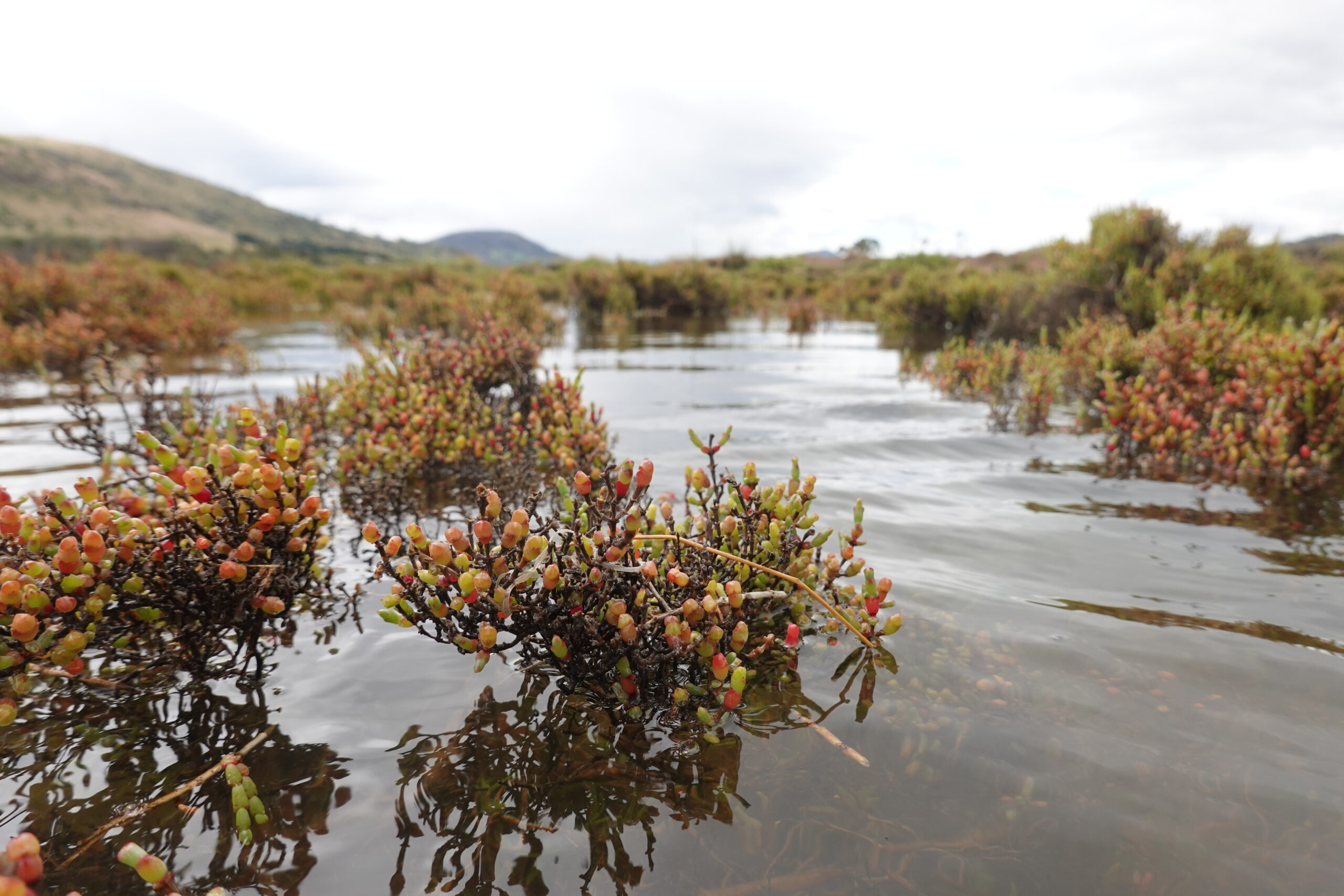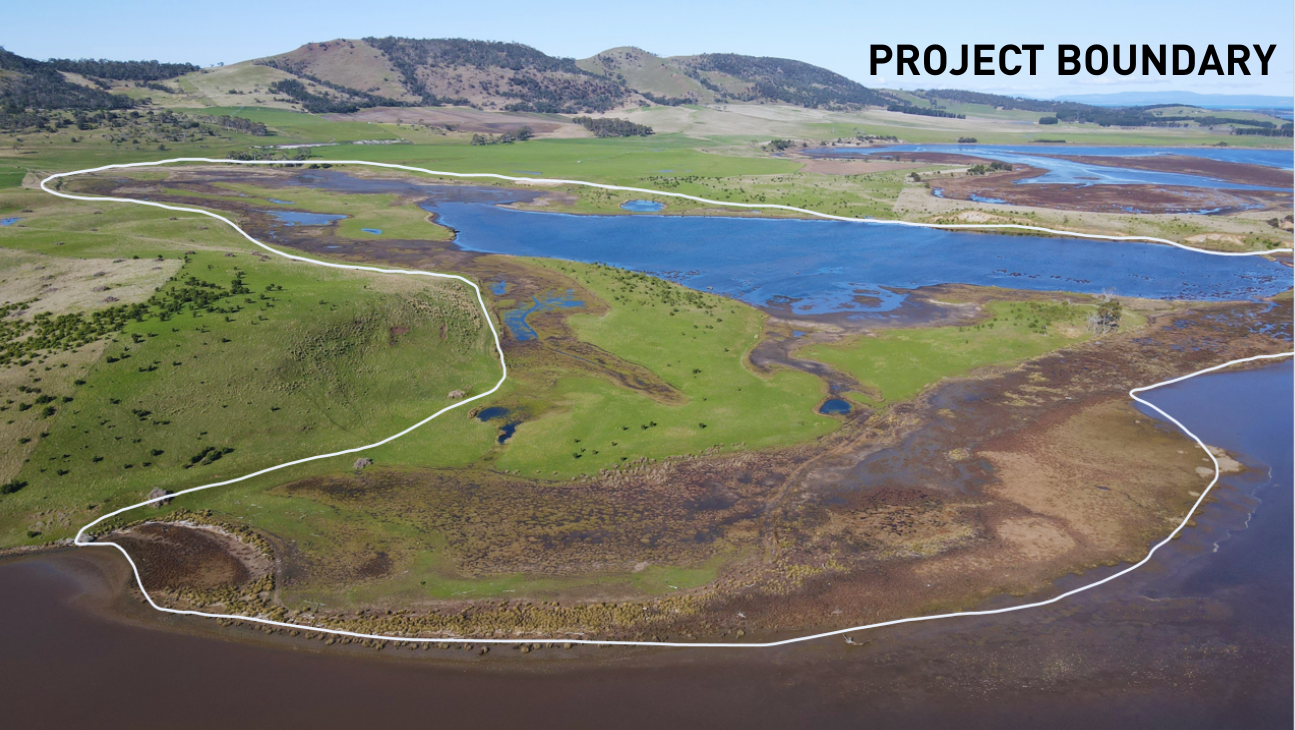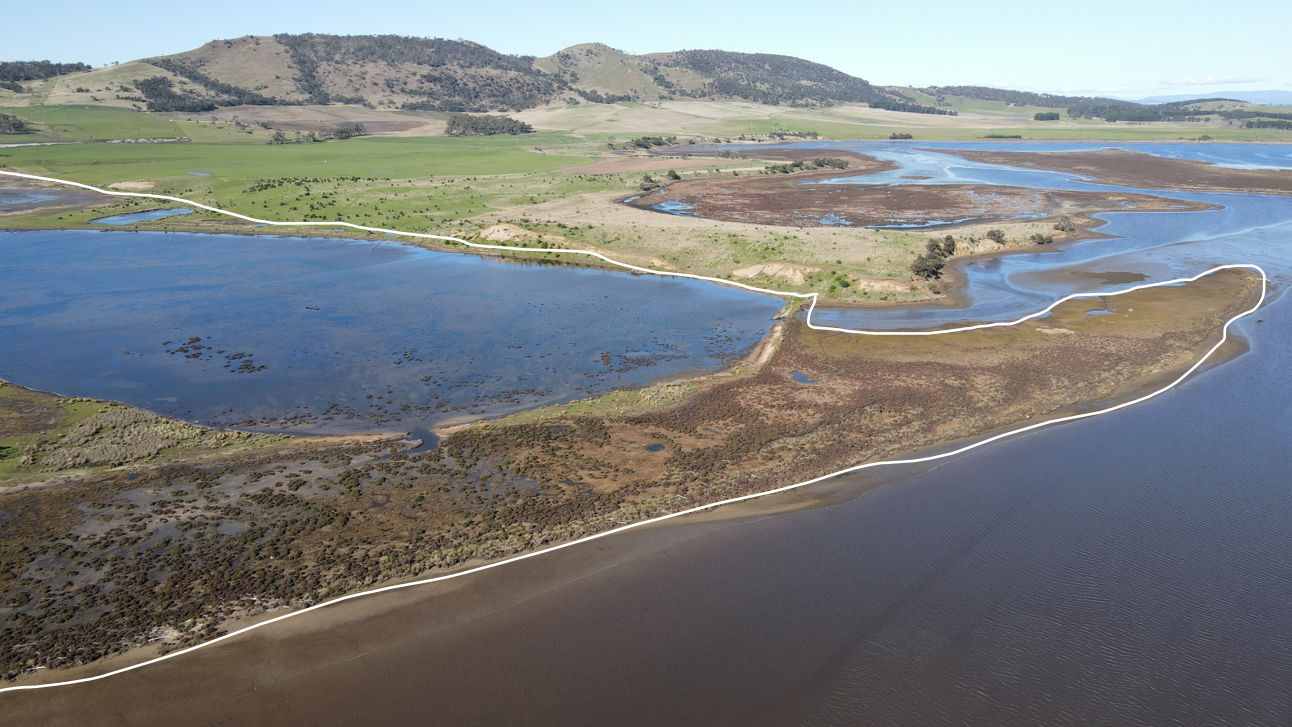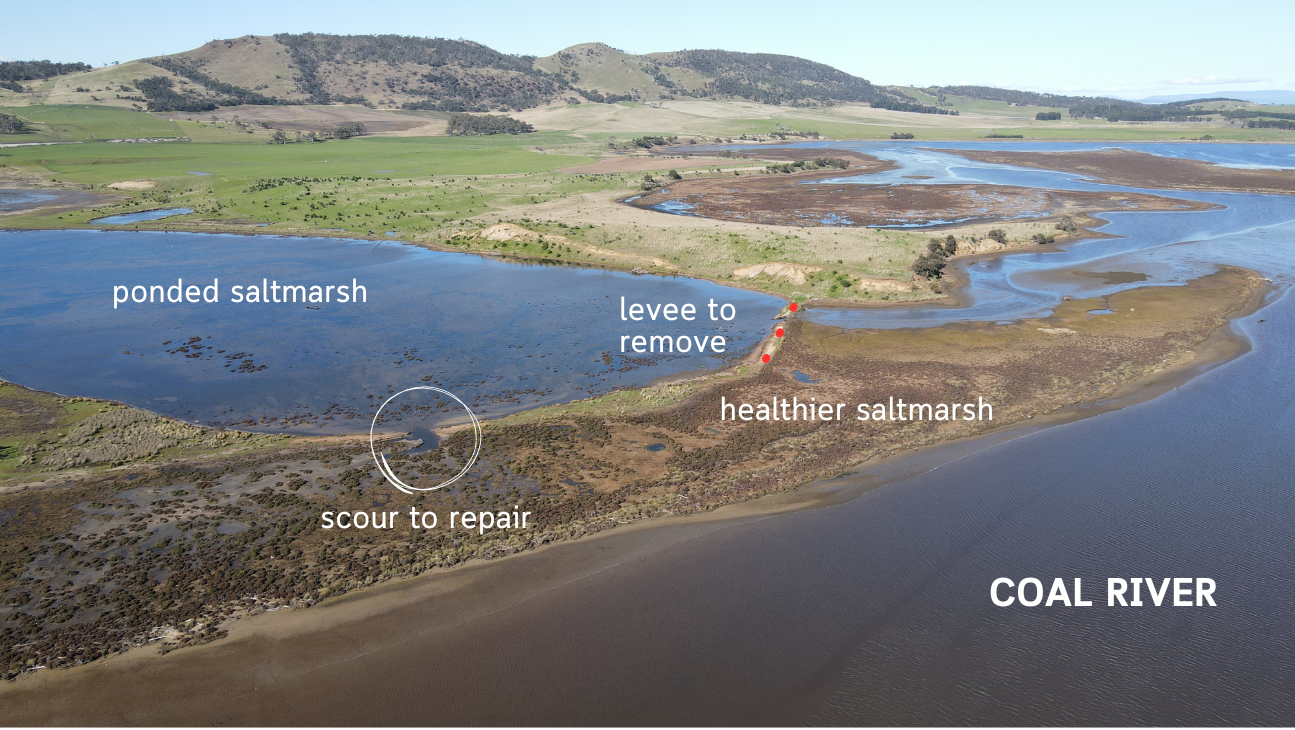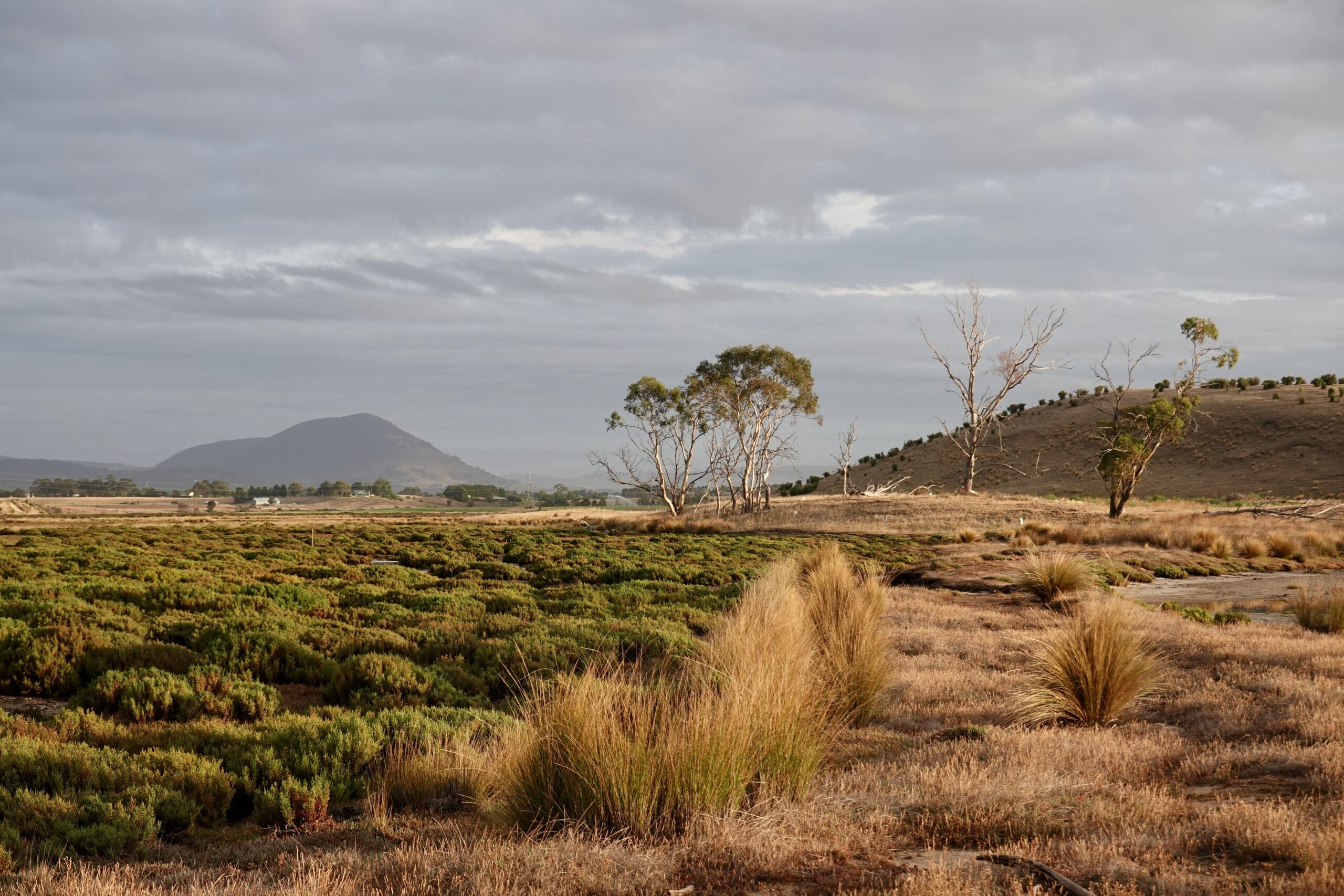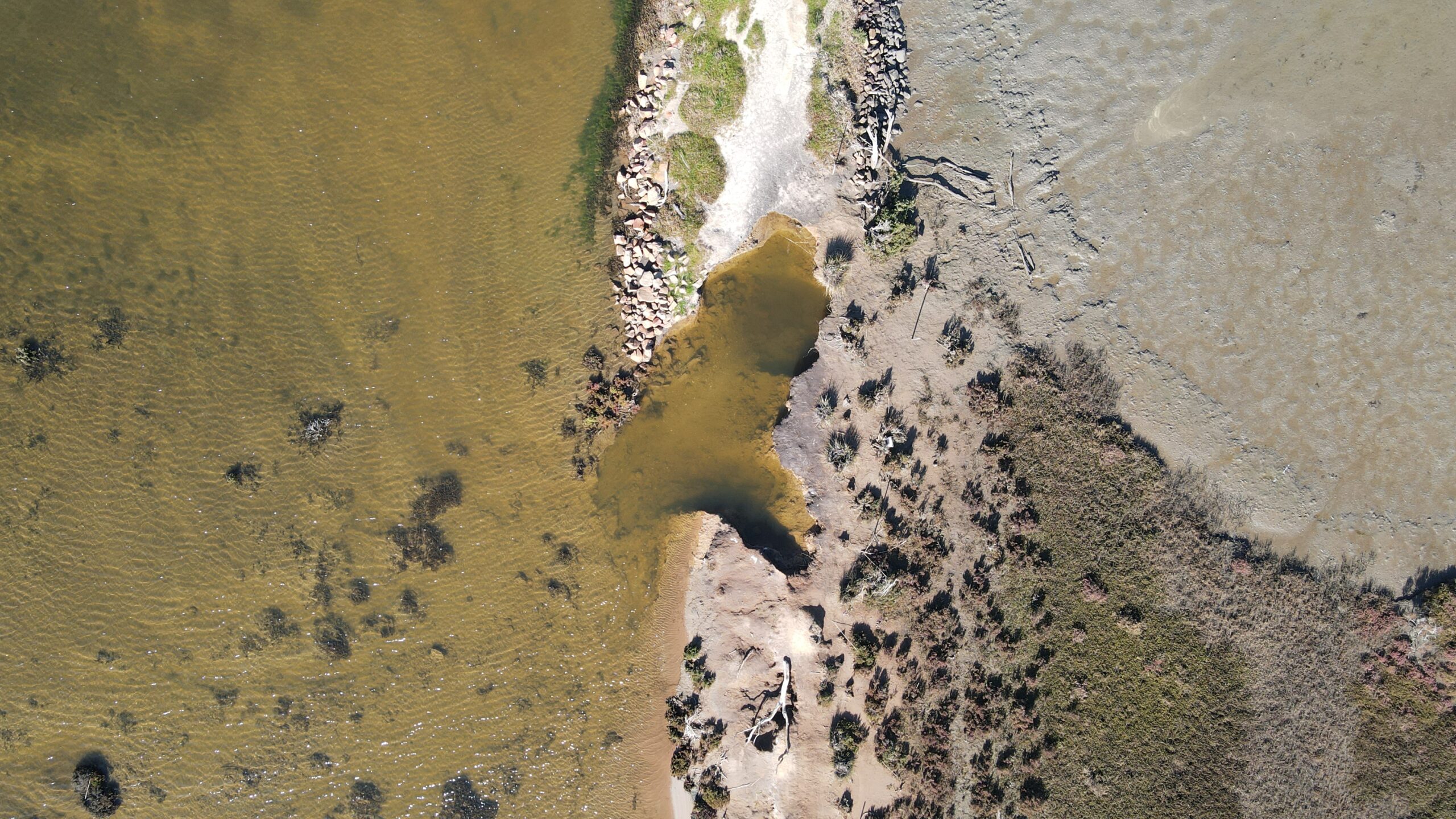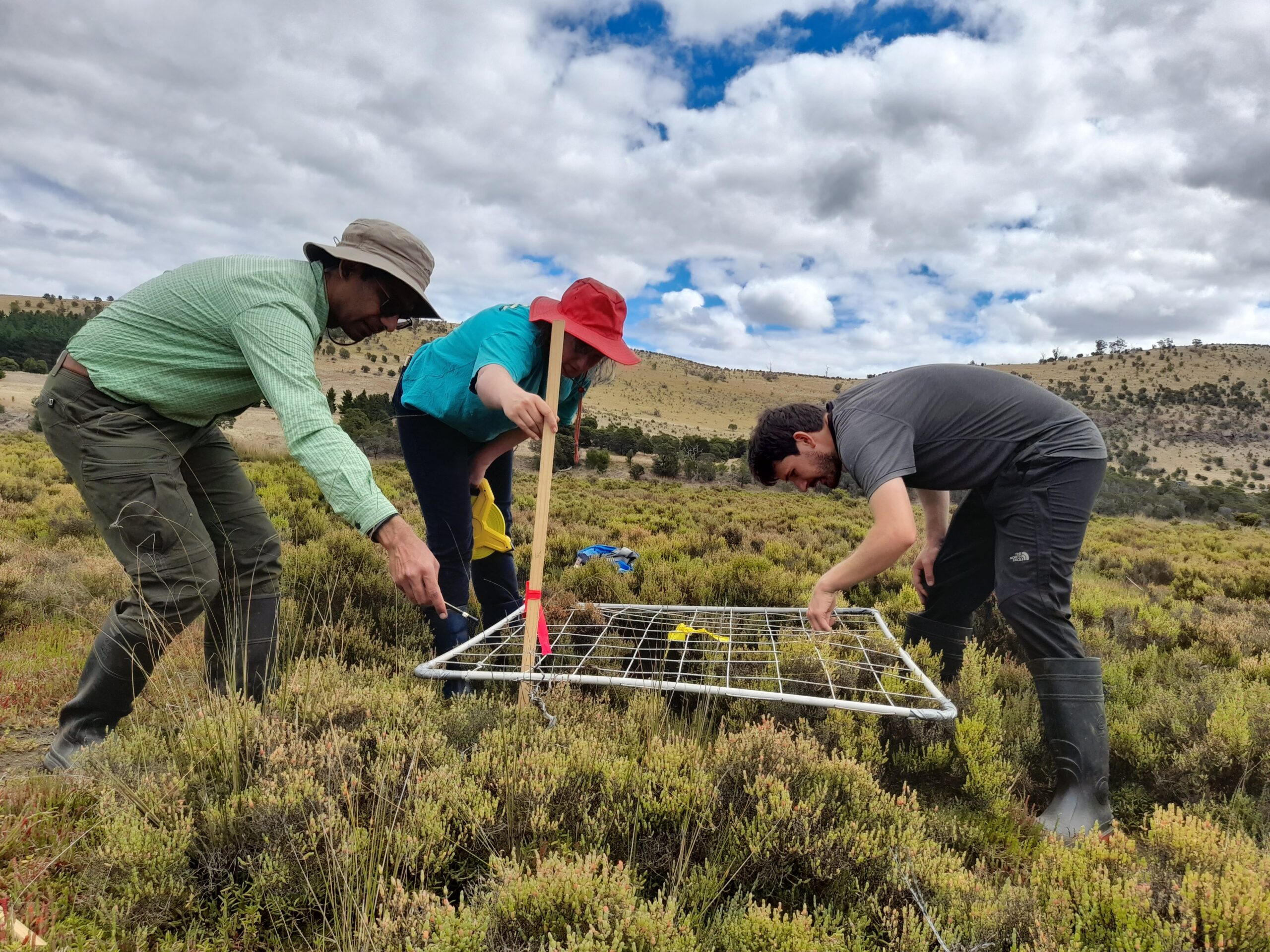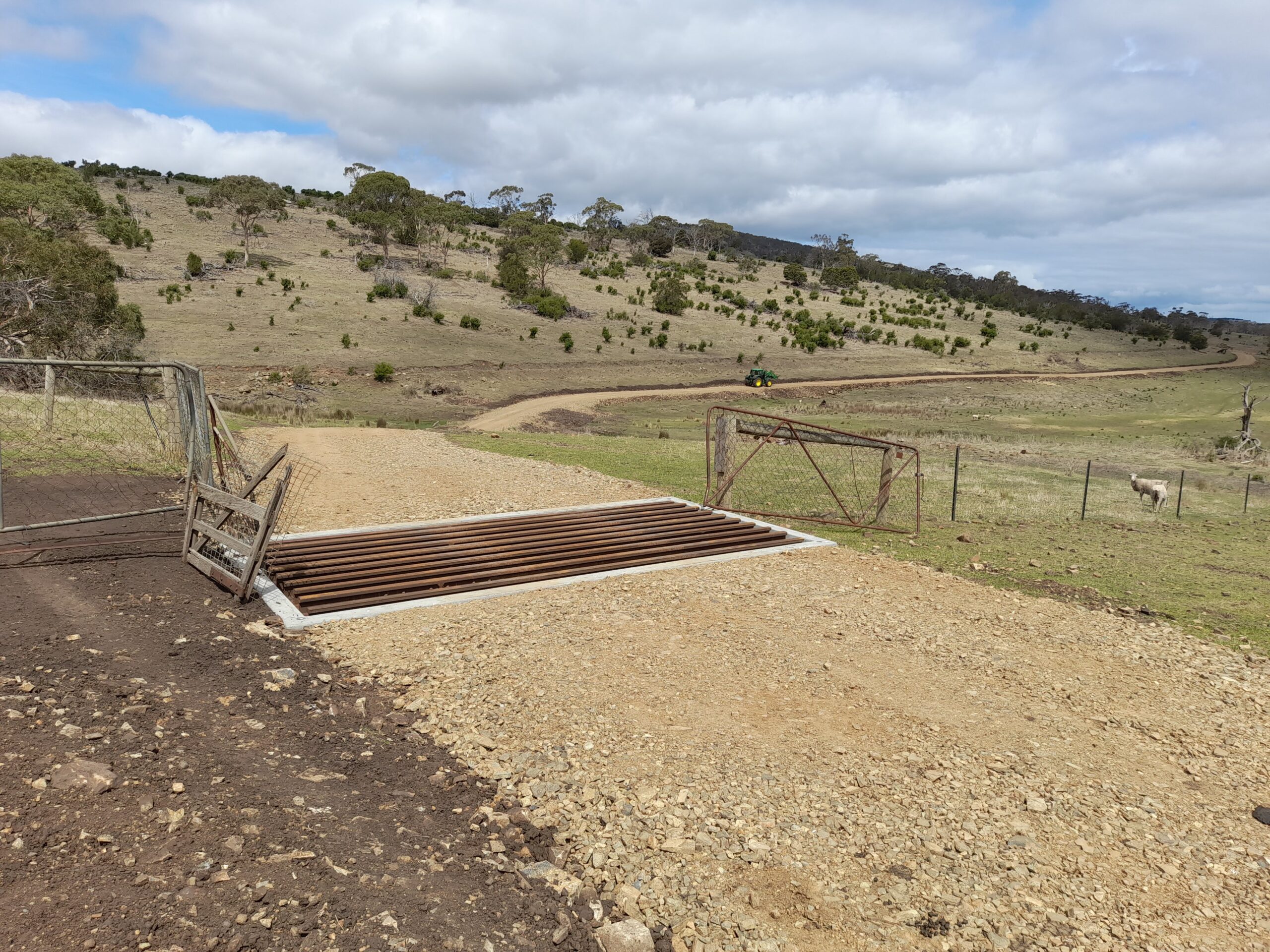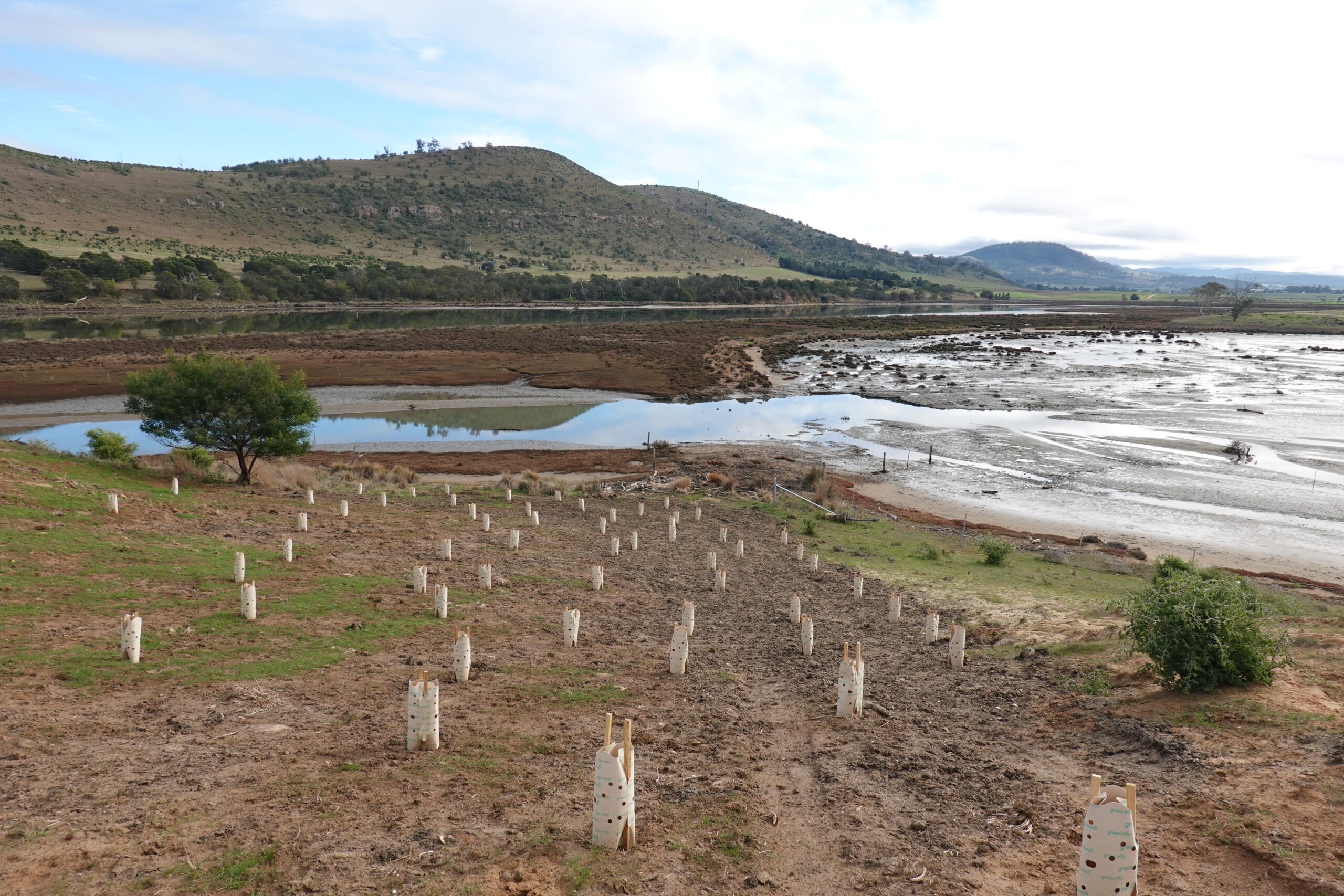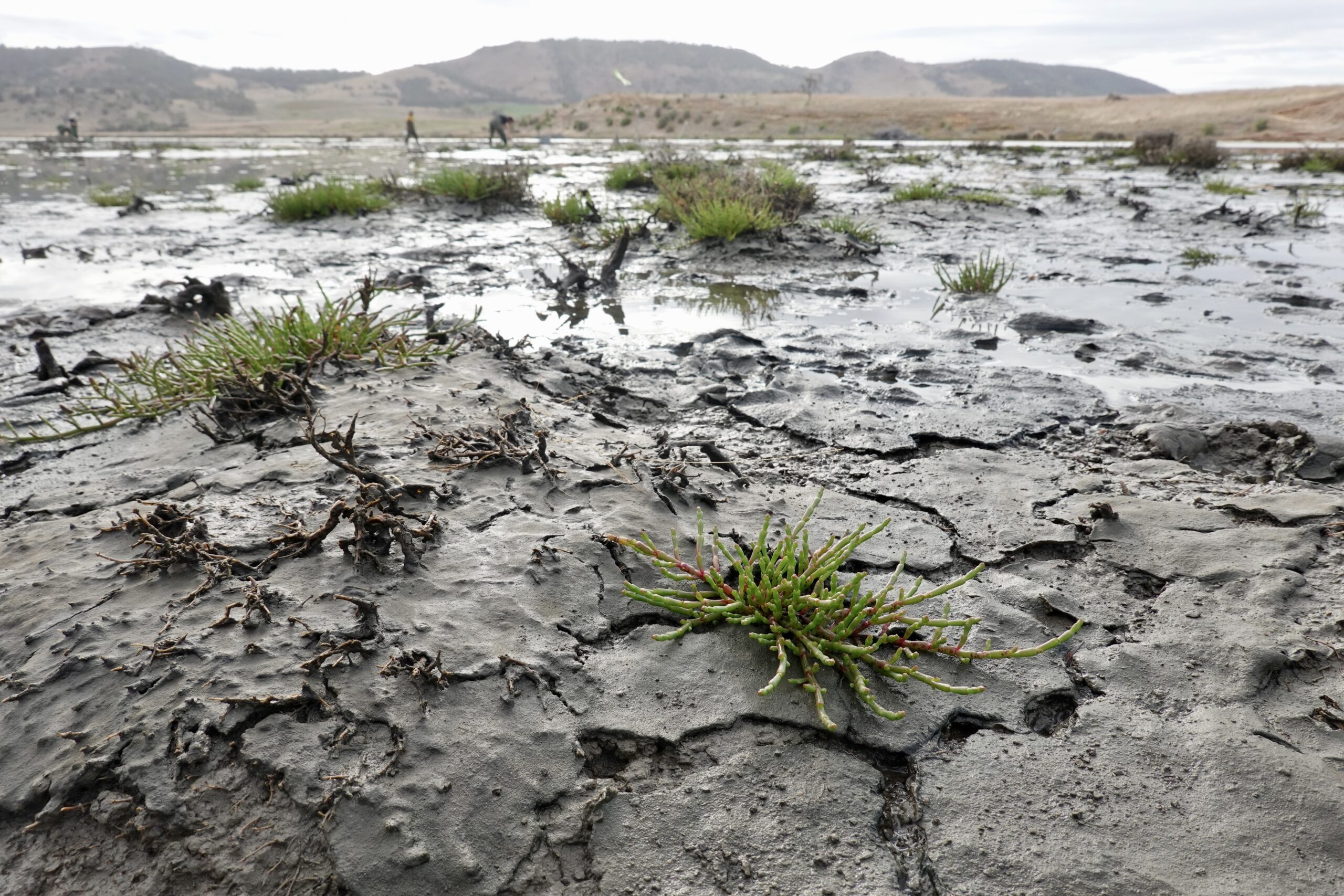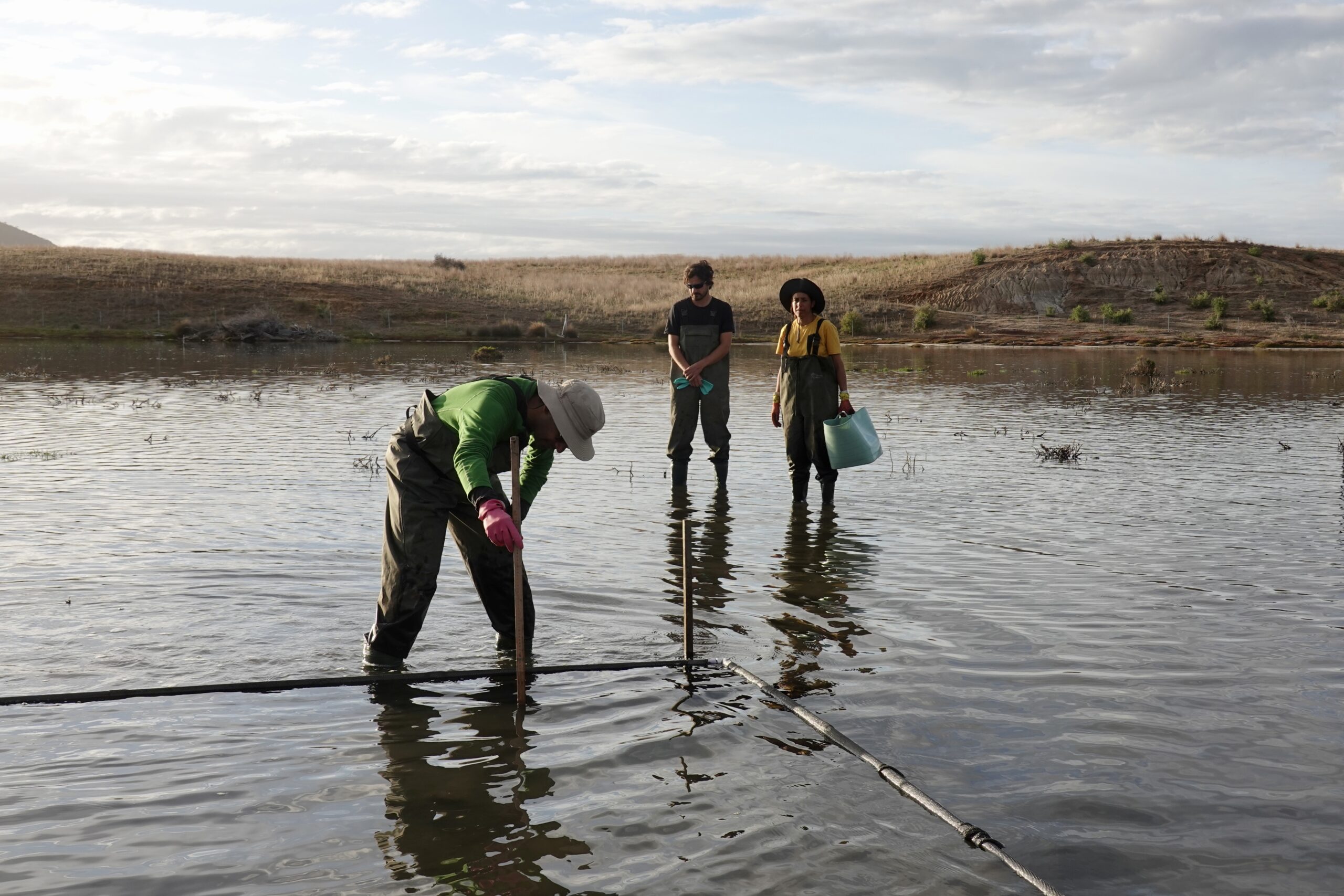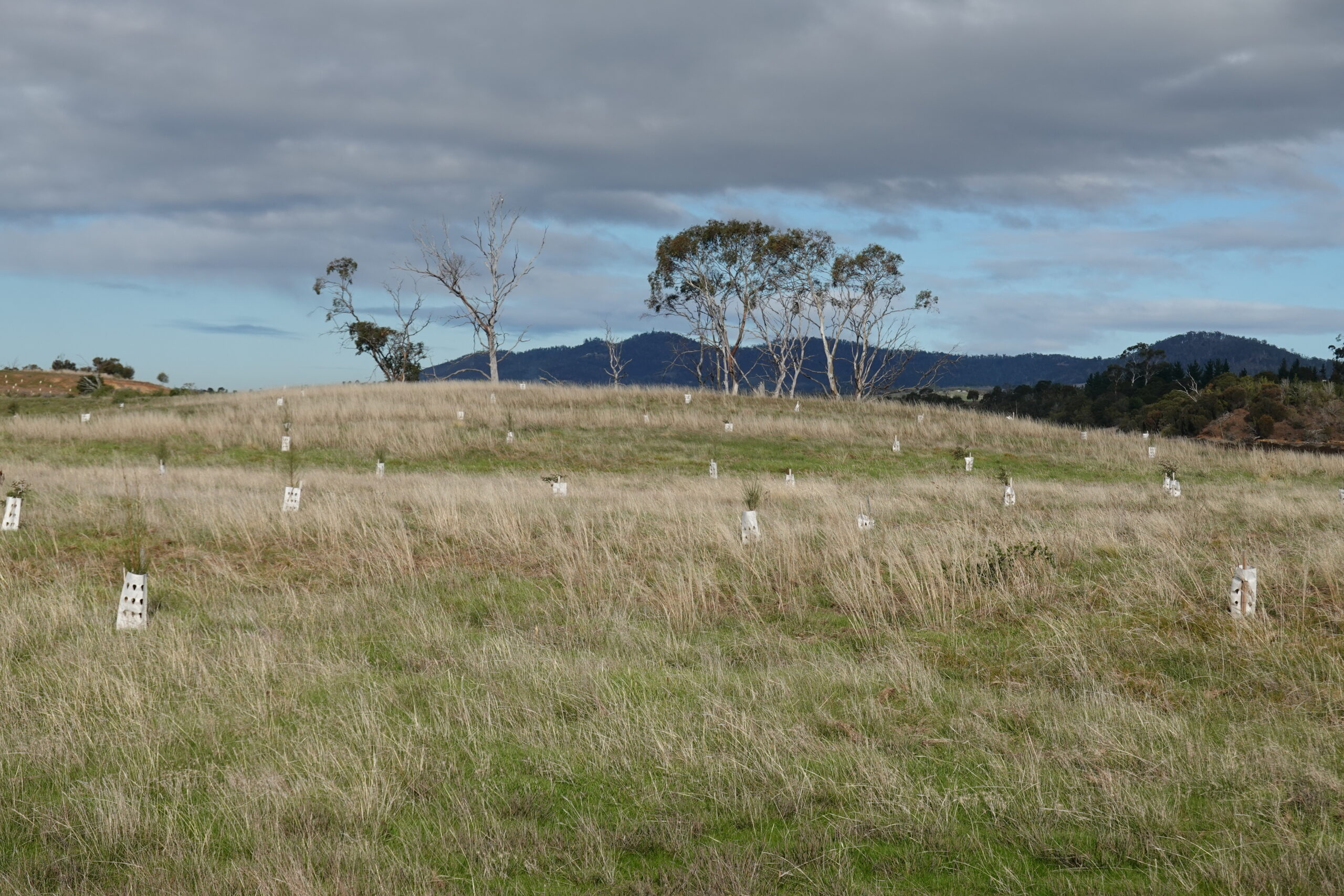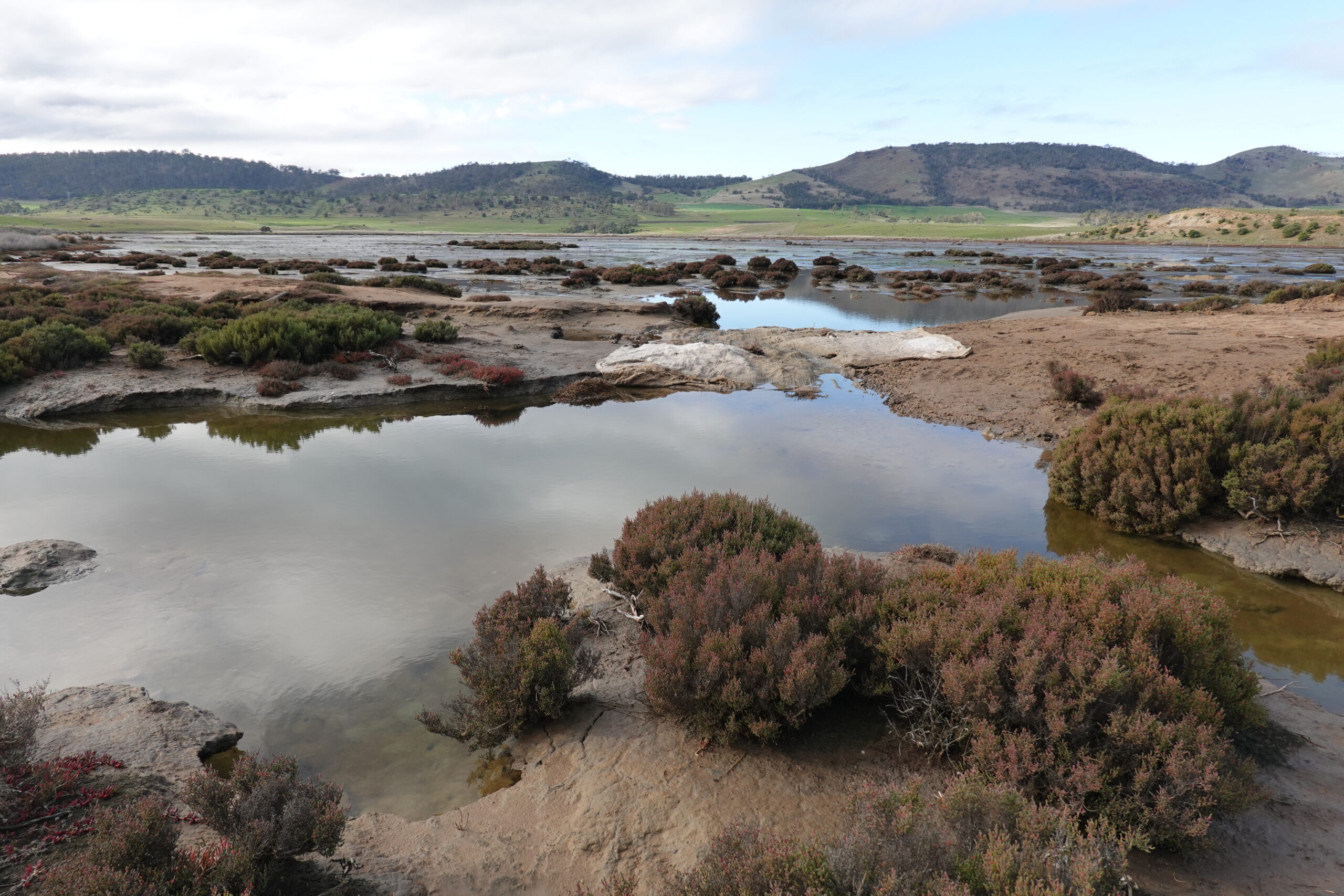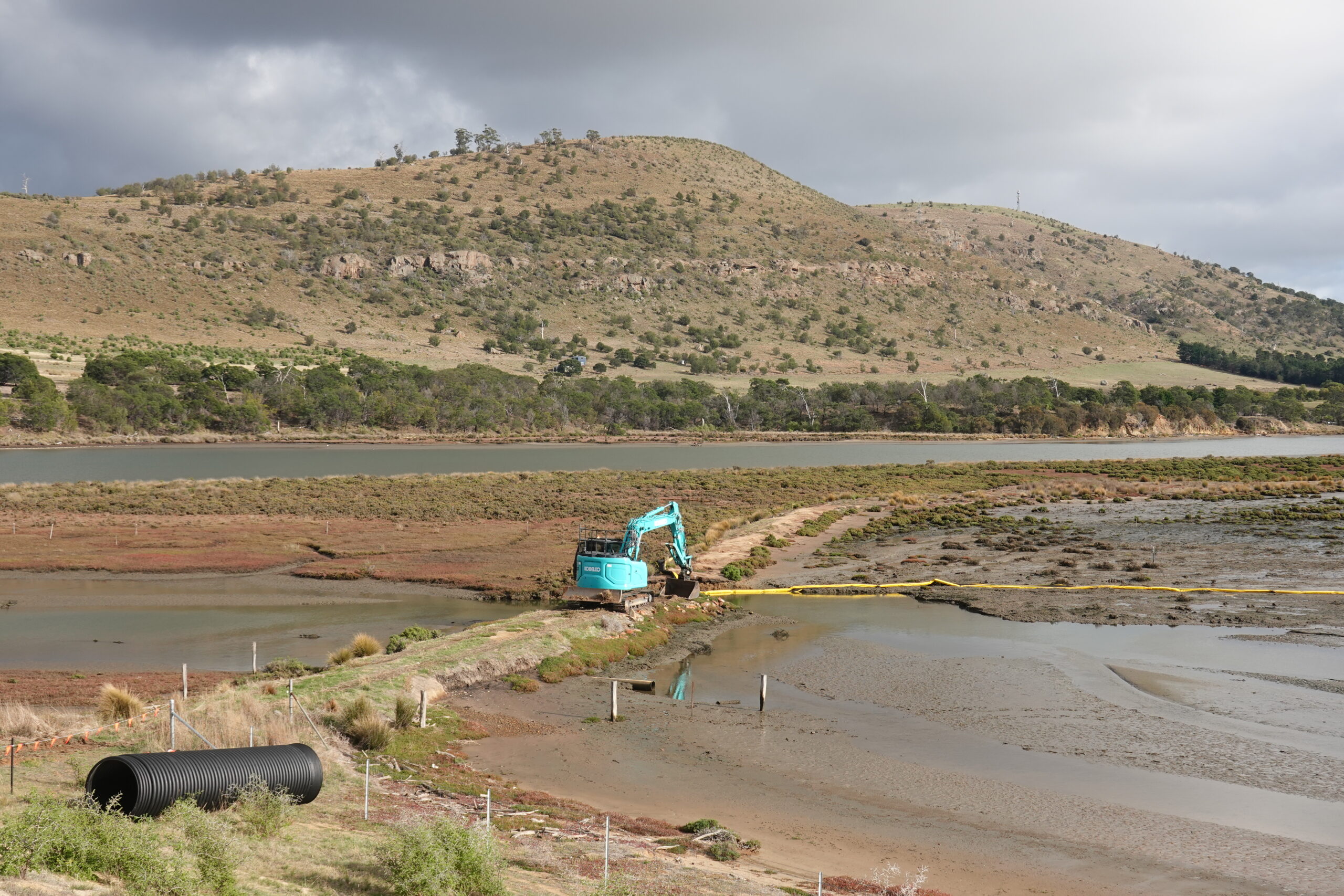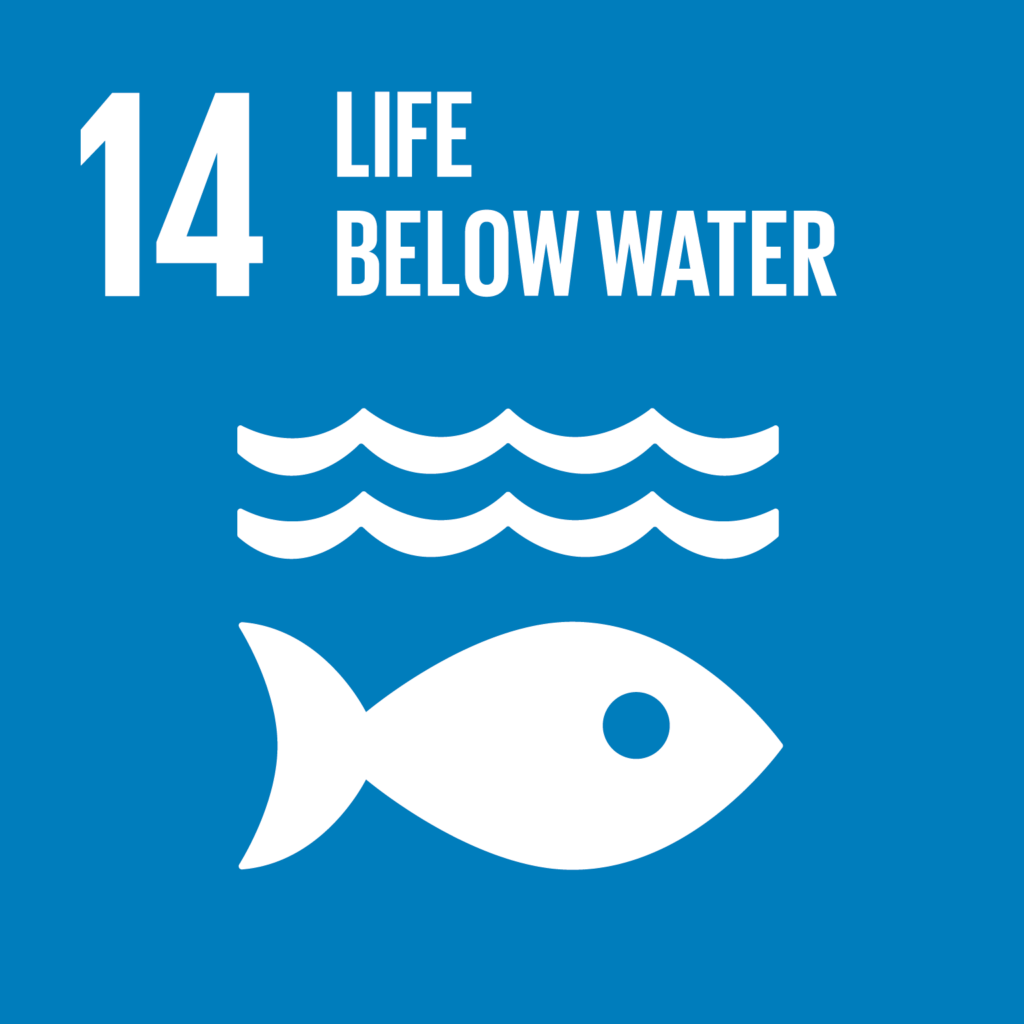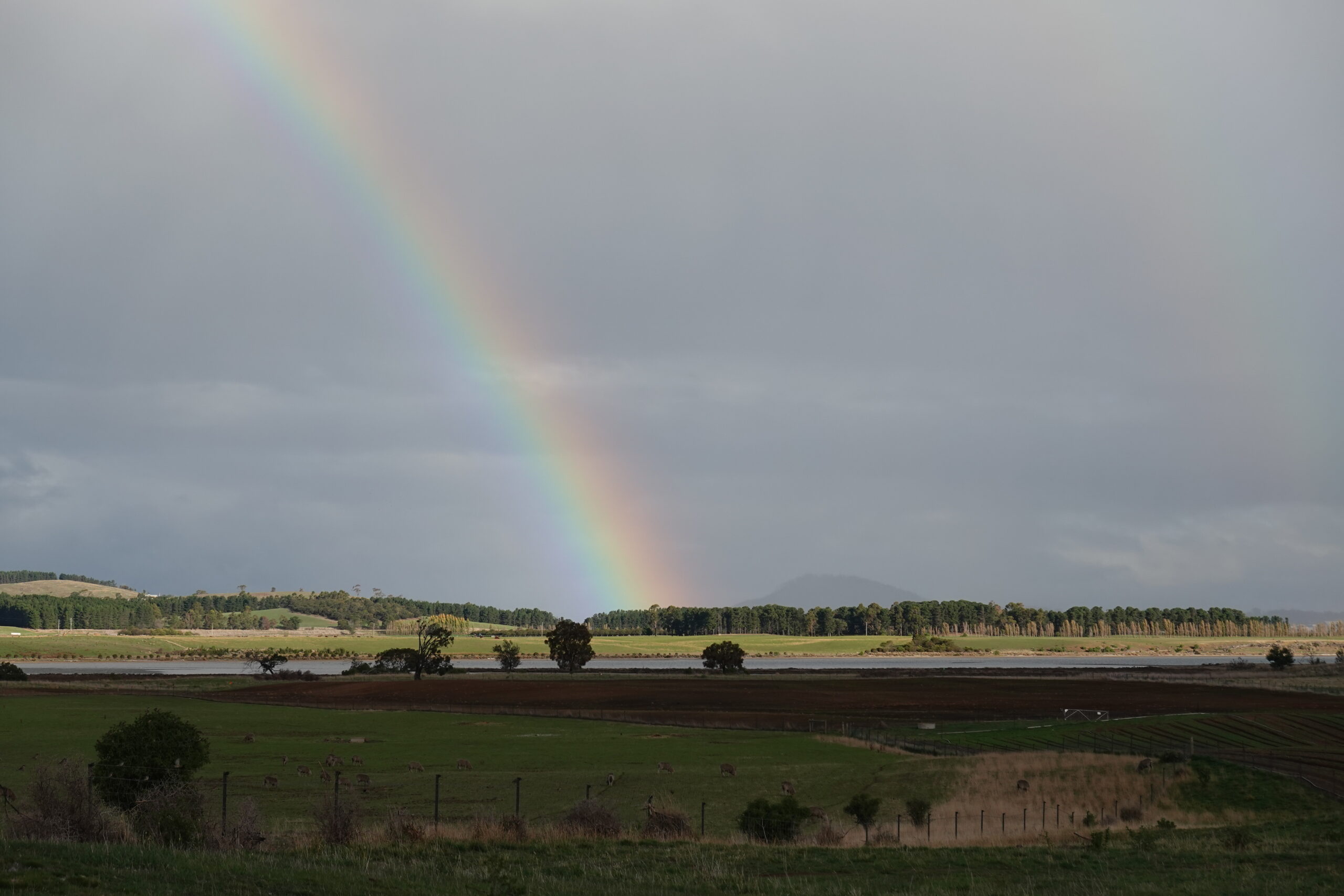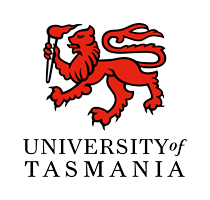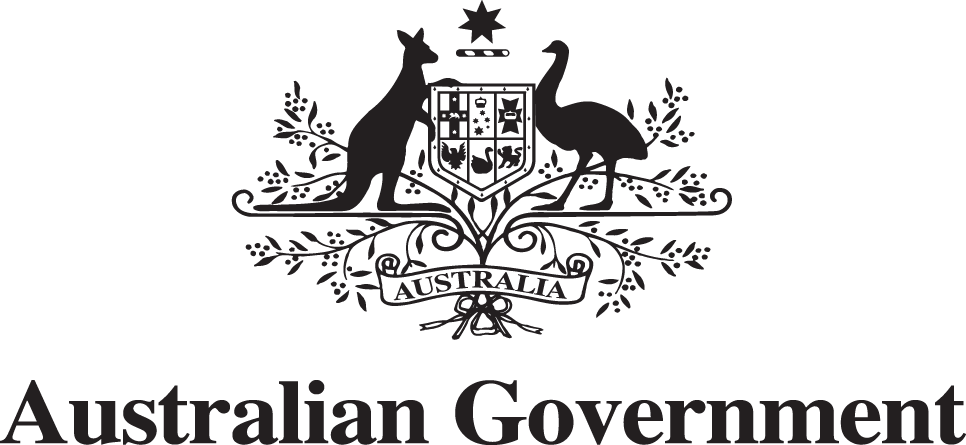Blue Carbon
This projects built on an existing Australian Government funded project which restored a stranded area of temperate saltmarsh community in Pitt Water Orielton Lagoon to improve fish habitat and biodiversity values.
The Blue Carbon Ecosystem Restoration project aimed to find out more about the diverse benefits of restoring a large area of stranded temperate saltmarsh community, including what happens to adjacent areas of habitat such as seagrass, or surrounding vegetation and ecological communities.
PLANNED PROJECT RESTORATION WORKS
Our Approach
Working in partnership with the University of Tasmania, this project;
- Removed a levee and reinstating natural water flows to 65 ha of stranded saltmarsh;
- Carried out baseline environmental monitoring to establish how levee removal influences site conditions;
- Completed weed control for African boxthorn and serrated tussock
- Revegetated grassy areas adjacent to the saltmarsh with native woody plants and grasses, and;
- Installed fencing to exclude stock
PROJECT PILLARS BLUE CARBON
Background
Blue carbon is the carbon stored in coastal and marine ecosystems. Coastal ecosystems are very productive and provide essential ecosystem services, such as coastal protection from storms and nursery grounds for fish. Coastal ecosystems also take up and store carbon from the atmosphere and the oceans, with much of the carbon being stored in sediments beneath coastal vegetation communities.
Through the process of restoring these communities, we improved this ecosystem’s capacity to sequester carbon and also improved habitat to make the coastline more resilient to natural events. We worked across 65 ha of temperate saltmarsh community, plus works to revegetate and remediate surrounding areas.
As a demonstration project, we’re aiming to learn about how restoration efforts impact on the ability of the saltmarsh to capture and store carbon as well as understand the diverse environmental and social benefits of blue carbon ecosystem restoration.
This project leverages existing funding, data collection, and restoration works from the Saltmarsh Restoration in Pitt Water-Orielton Lagoon project. It allows NRM South to expand the breadth and timeframe of restoration and monitoring at this important site.
Baseline Data Collection
We partnered with the University of Tasmania to conduct baseline environmental monitoring at the site.
Prior to the removal of the levee, and using established monitoring regime methodology, baseline data was collected for:
- Flora and vegetation, including seagrass
- Fauna (birds, fish, invertebrates, and browsers)
- Hydrology and water level
- Water quality
- Microclimate (temperature, light, relative humidity)
Hydrology
Sections of saltmarsh had become stranded from tidal inundation, altering the connectivity of fish habitat and exposing waterways to increased nutrient inputs. In autumn 2024, a levee was removed at the project site, restoring natural water flows to 65 ha of saltmarsh wetland.
Prior to the removal of the levee, a hydrological assessment of the project site was completed by Blue Conservation Services, with information gathered to support the project’s potential registration under the Emissions Reduction Fund’s Tidal restoration of blue carbon ecosystems method. Although the project was not ultimately submitted for registration, the learnings for NRM South, local land managers, and project partners have been invaluable.
Weed Control
African boxthorn (Lycium ferocissimum) and serrated tussock (Nassella trichotoma) are present at the project site. Both are Weeds of National Significance, and threaten the condition of the wetland.
NRM South engaged a contractor to remove African boxthorn by ‘cut and paint’, and spray serrated tussock where present across the site.
Revegetation
Elevated grassy areas adjacent to the saltmarsh were revegetated with native woody plants and grasses, with the aim of helping to restore the microclimate and consequently promote natural regrowth of saltmarsh vegetation species.
Fencing
Access to the restored wetland and revegetated fringing habitat was controlled through up to 2 km of fencing, which permanently excludes stock, to protect important saltmarsh vegetation communities and Aboriginal cultural heritage from trampling.
